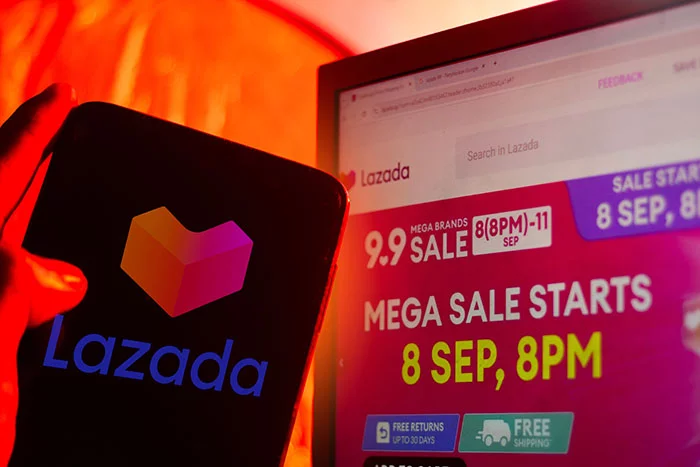Hyper-Personalization: Delivering Tailored Experiences to Filipino Consumers

Marketing is no longer about reaching the most people—it’s about reaching the right people. Filipino consumers now expect brands to offer experiences tailored specifically to their needs, preferences, and behaviors. The old “Dear Valued Customer” approach doesn’t cut it anymore. Today’s buyers want to feel seen, understood, and appreciated.
This is where hyper-personalization comes in. More than basic personalization, it uses artificial intelligence (AI), real-time behavioral data, and automation to create marketing messages that feel as though they were crafted for one person only.
But how exactly can brands use hyper-personalization to increase engagement and conversions in the Philippines? Let’s explore.
What is Hyper-Personalization in Digital Marketing?
Hyper-personalization is the advanced form of personalized marketing that relies on real-time data, AI, and machine learning to deliver relevant content, product recommendations, or messaging tailored to individual behavior.
Unlike traditional personalization, which may use a person’s name or demographic info, hyper-personalization uses behavioral triggers—like location, device, purchase history, or browsing patterns—to respond in real time.
According to a McKinsey study, companies that excel at personalization generate 40% more revenue from those activities compared to competitors. That means this isn’t just a trendy buzzword—it’s a profit-driving strategy.
Hyper-Personalization in the Philippines
Filipinos are digital-first consumers. Filipinos spend an average of 3 hours and 43 minutes a day on social media, one of the highest rates globally.
This mobile-heavy behavior opens doors for businesses to hyper-personalize through mobile apps, social media ads, email marketing, and more.
Examples of hyper-personalization in the Philippines:
Personalization vs. Hyper-Personalization: What’s the Difference?
|
Personalization |
Hyper-Personalization |
|---|---|
|
Uses names and demographics |
Uses real-time behavior and context |
|
Based on fixed personas |
Dynamically adapts to individuals |
|
Limited to email or app |
Works across web, email, app, chat, and more |
|
Example: “Hi Juan!” |
Example: “Juan, it’s payday! Here’s 10% off what you added to your cart.” |
The shift toward hyper-personalization is fueled by the demand for relevance and immediacy. Consumers—especially in the Philippines—are savvy and won’t engage with content that doesn’t feel timely or personalized.
Why Hyper-Personalization Matters for Filipino Businesses
Still not sold on the hype? Let’s get into the ROI.
Hyper-personalization can significantly enhance customer satisfaction by customizing every step of the customer journey according to individual preferences and past behavior. It is hinged on talking to them, not talking at them. Disruptive ads without some kind of emotional appeal no longer work. Hyper-personalization is like remembering a customer’s birthday, buying them their favorite treat, and recommending a restaurant they’ll love—all before they even ask.
That’s what hyper-personalization is all about: anticipating your customers’ needs and exceeding their expectations.
More Engagement
According to Twilio Segment’s State of Personalization Report, 69% of consumers say they’re more likely to engage with a brand that provides personalized experiences. When marketing feels relevant, Filipinos respond with clicks, swipes, and purchases.
Higher Conversion Rates
Personalization shortens the path to purchase. Econsultancy reports that 80% of companies see an uplift in conversion rates when implementing personalized experiences.
From showing sale alerts based on payday schedules to offering targeted push notifications, personalized interactions encourage faster decisions.
Brand Loyalty
The Salesforce Connected Customer Report shows that 66% of consumers expect companies to understand their unique needs. In the Philippines, this means tailoring promos to regional holidays, payment behavior (e.g., post-sweldo shopping), or even content in Taglish.
Improved Customer Satisfaction
Hyper-personalization leads to fewer irrelevant messages, which equals less frustration and more satisfaction. According to Accenture, 91% of consumers are more likely to shop with brands that recognize, remember, and provide relevant offers and recommendations.
How to Deliver Hyper-Personalized Customer Experiences
There are several ways businesses can implement hyper-personalized marketing. Here’s how you can bring that to life:
User Real-Time Data
Track behaviors like clicks, cart abandonment, scroll depth, and time on page using tools like:
Segment with Context
Go beyond demographics. Consider:
Automate, But Keep It Human
Use automation platforms like:
Trigger-based messages can still feel personal with thoughtful copy and warm language. “Hey Ana, still thinking about those white sneakers? Here’s 10% off—just for you.”
Predict What They Want
Predictive analytics can forecast:
Tools like Salesforce Einstein and Dynamic Yield enable these capabilities.
Personalized Content at Every Touchpoint
Make the whole customer experience feel tailored:
Zalora does this well by showing personalized fashion picks based on past views.
Barriers to Hyper-Personalization (and How to Overcome Them)
Privacy Concerns
Filipino consumers value privacy. The Data Privacy Act of 2012 ensures companies handle user data with transparency. Be upfront about data usage and offer opt-ins and preference settings.
Tech Limitations
Smaller businesses may lack the tools. Start with affordable platforms like:
Content Fatigue
Hyper-personalization means creating more versions of content. Use dynamic content templates to scale your efforts and integrate modular design in emails and pages.
Hyper-personalization isn’t just a marketing tactic—it’s a competitive advantage. For Filipino businesses, it’s an opportunity to build stronger relationships, foster loyalty, and turn data into ROI.
Whether you’re a startup or an enterprise, hyper-personalized marketing is no longer optional—it’s expected.








